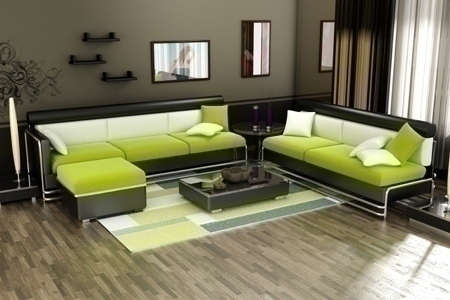 According to the Real Estate Staging Institute, a staged home sells 70 percent faster than a non-staged home. Are your listings staged to sell? Or are you sabotaging the sale? Expert stagers share the most common staging mistakes below. Help your sellers avoid these mistakes so you can sell their home faster.
According to the Real Estate Staging Institute, a staged home sells 70 percent faster than a non-staged home. Are your listings staged to sell? Or are you sabotaging the sale? Expert stagers share the most common staging mistakes below. Help your sellers avoid these mistakes so you can sell their home faster.
1. Mistake: Not creating space. “People often move because they want more room, so make sure the house feel as spacious as possible,” says Egypt Sherrod, host of HGTV’s “Property Virgins.” “Clutter robs a home of valuable space. Make sure everything is cleared from the countertops and remove at least two-thirds of books on the shelves.”
“Furniture, art and accessories that are not scaled correctly for a room are a big mistake,” says Dawn Alpern, associate designer at Interior Transformation, Inc. “These items need to fit the room. It doesn’t work if they are too big or too small.”
“Closets should be half full, and buyers should be able to see the bottom of the closet. If they see a jam-packed closet, they will think it’s too small for them. Bedrooms should contain only a bed, nightstand and dresser. In the master bedroom, swap out the king-size bed for a queen-size bed to create more space,” says Sherrod. “Throughout the house, pull furniture two or three inches out from the walls and allow the corners of a room to be visible.”
2. Mistake: Excessive furniture. Too much furniture, or oversized furniture, can ruin a home sale. There needs to be enough room for buyers to walk in and out of all the rooms in your home. If there is any doubt that a piece of furniture may be too big or distracting, take it out, says Cannon Christian, president of Renovation Realty.
“Remove the seller’s giant family-size couches, chairs and tables and replace them with rented mid-size or small furniture to make the room feel more spacious,” says Scott Sorrell, CEO of Sales Adrenaline.
3. Mistake: Household smells. “The only thing as important as decluttering is having an immaculate house. A house that smells odd to a prospective homeowner, whether because of a cat’s litter box, dogs, or exotic food can easily be a deal breaker,” says Sherrod. “Don’t try to mask anything with potpourri, or by baking cookies. Just open windows a few minutes before a showing to let in fresh air.”
“Having a professional cleaning company come in to scrub walls, floors, carpets and windows can make an amazing difference, both in general appearance as well as removing odors. If the smell persists after the cleaning crew has finished, consider replacing any carpets used by animals,” says Russ Tybus, co-owner of Morris Organizers.
“We were recently in a listing with a newer kitchen, updated utilities and very little clutter. The real estate agent did a nice job staging the house, but what they missed was overwhelming. There was a very distinct smell of animals. Candles were lit, which only drew more attention to the fact that they were trying to cover something up. On top of that, most of the floor moldings were filthy, covered in everything from scuff marks to food splashing and slobber. That home was likely to be known as the dirty animal house, when the home was staged very nicely,” says Tybus.
4. Mistake: Failure to edit. “The failure to edit can include too many personal items, clutter or disastrous decor. If your seller thinks the home is edited as much as it can be, tell them to edit again. The goal should be to remove virtually everything that would allow a buyer to picture the current owners in the home,” says Rhonda Duffy, owner of Duffy Realty of Atlanta.
Sherrod encourages using vignettes throughout the home. Vignettes are groupings of accessories, usually in threes. It could be three pieces of art on the wall, candlesticks, something tall, medium and short. The shapes and colors can help draw the visitor through the room and make the room visually interesting.
5. Mistake: Having more than one focal point in a room. “Every room needs a focal point, but most people never figure out what it actually is,” says Alpern.
“As a rule, in the bedroom it is the headboard, in the bathroom it is the vanity area. The living room’s focal point can be the television, the fireplace or the window, says Karl Lohnes, interior designer and co-host of HGTV’s “This Small Space.”
6. Mistake: Color Faux Pas. Lauren Schreyer, broker at Related Realty cautions sellers not to choose drastic shifts in color from one room to the next. “It’s critical to maintain a continuum of a neutral paint color throughout the main areas of the home to provide a sense of openness and flow. This also helps make a home feel bigger,” says Schreyer.










